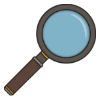


You can find all of our speech pathology resources here. Have a browse and see what you can find.
Initial consonant deletion (ICD) is considered a phonological disorder. ICD is when a child consistently misses off the first consonant at the start of a word. It can be common for children to leave consonants off the end of words, however it is quite uncommon for a child to get rid of the first consonant of a word.
Because ICD is considered a phonological disorder, this means that the child has developed a rule in their head that tells them to remove the initial consonant in words. This is not a conscious error, and some children may not even realise they are doing it. Put simply, it is just their brain coming up with an easier way to say the word.
It is recommended that a child sees a speech pathologist no matter what their age is if they are showing signs of initial consonant deletion. You may notice them saying words incorrectly, for example, saying ‘ee’ instead of ‘tree’. A speech pathologist will be able to work with the child and help them with this phonological disorder and, hopefully, will be able to correct it.
Although initial consonant deletion may sound worrying when you say it is a phonological disorder, it can be reversed and a speech pathologist will work with the child to ‘re-train’ their brain.
To start with, a speech pathologist may use minimal pairs to help the child with initial consonant deletion. They will find minimal pairs where one word has an initial consonant and the other doesn’t, for example ‘cup’ and ‘up’, as well as ‘off’ and ‘cough’. You could use these Initial Consonant Deletion Minimal Pairs Cards to get you started.
You can hold the minimal pairs up in front of the child and explain the differences between the two. If you can get images of each word, this will help the child to understand each word and the differences between the two.
You can ask the child to point to certain words, for example, you could say ‘point to the card that says cup’, and the child will have to find which card has the word ‘cup’ on it. As they point to the card, you can say the word they are pointing to. If they point to the wrong card, you could say, ‘Nice try. That word says ‘up’ we are looking for a card that says ‘cup’.
Once the child has got the hang of pointing out the cards and can do so correctly, get the child to say the words. They might not be able to say these words correctly straight away, but you can work on it and keep repeating the correct words.
You can give them examples by saying the word in sentences and getting the child to copy the sentence. The most important thing to remember is to keep practising. The more you practise, the easier it will become for the child to say the words correctly.
If a child is finding this process challenging, you could try the following:
It is important to remember that these things can take time to correct, and it isn’t going to happen overnight. Stay patient and keep practising. The more you do it, the easier it will become.
If you want more resources to help children with initial consonant deletion, then we suggest you check out these resources:
We hope you find these resources useful. These are just a few examples of the resources we have available on our website.
All of our resources are made by a team of experienced teachers, designers, and experts, and they align with the Australian Curriculum. So you can rest easy knowing that you are using suitable and reliable resources to teach children.
If you can’t find what you’re looking for, let us know, and we will get right on it!











